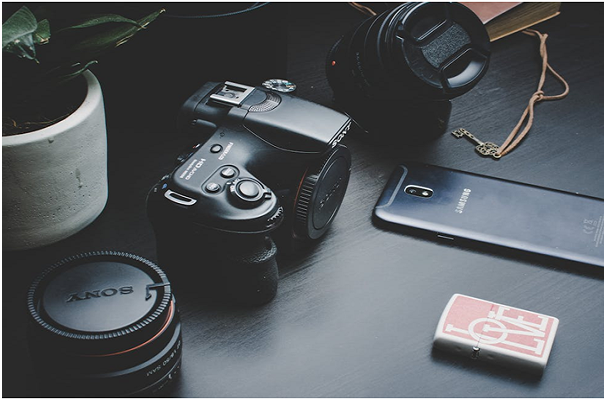The thought of using a camera for the first time can be intimidating for a beginner photographer. With so many buttons, dials, and settings to choose from, it can be difficult to know where to begin. However, by learning a few basic camera functions, you'll be well on your way to taking stunning photographs. In this article, we'll go over the most important camera functions you should be aware of before embarking on your first photography adventure.
Exposure Triangle
The exposure triangle is a fundamental photographic concept that refers to the three factors that determine an image's exposure: aperture, shutter speed, and ISO. These elements work together to control the amount of light that enters the camera, and the combination you select will determine how your image looks in the end.
Aperture is the hole in the lens that allows light to enter the camera body. It is measured in f-stops and can be changed to control how much light enters the camera. A larger aperture (low f-stop) lets in more light, while a smaller aperture (high f-stop) lets in less. A wider aperture is also useful for creating a shallow depth of field, which makes the subject stand out from the background.
Shutter Speed: This is the amount of time that the camera's sensor is exposed to light. A fast shutter speed freezes motion, whereas a slow shutter speed blurs it. Shutter speeds are measured in seconds or fractions of seconds, with typical speeds ranging from 1/1000th to several seconds.
ISO: The sensitivity of the camera to light is measured by ISO, which determines how bright or dark the final image will be. A low ISO (100 or 200) is ideal for bright, well-lit scenes, whereas a high ISO (800 or higher) is required for low light situations. Using a high ISO, on the other hand, introduces more noise into the image.
Focus Modes
The focus modes of the camera determine how the camera focuses on the subject. There are several focus modes available, but the most common are single-shot (AF-S) and continuous (AF-C).
AF-S (Auto Focus Single Shot): This mode is best for still subjects and focuses on the subject when the shutter button on the camera is half-pressed. The camera will lock focus and hold it until the photograph is taken.
AF-C (Auto Focus Continuous): This mode is best for moving subjects because it adjusts focus continuously as the subject moves. This is useful for getting action shots or following a moving subject.
If you're in the market for a new camera, a good option would be to buy Sony mirrorless cameras, for instance. These cameras offer high image quality, fast autofocus and compact design, making them an excellent choice for both amateur and professional photographers.
Metering Modes
Metering modes govern how the camera computes exposure. There are numerous metering modes, but the most common are matrix (evaluative), center-weighted, and spot metering.
Matrix Metering: This mode calculates an average exposure by taking into account the light levels in the entire scene. This is the most common metering mode and is frequently set as the default on most cameras.
Center-Weighted Metering: This mode calculates exposure based on light in the center of the frame, giving the center of the scene more weight. This mode is useful for portraits or still life images where the subject needs to be properly exposed.
Spot Metering: In this mode, the exposure is calculated based on a small, circular area in the center of the frame. This mode is useful for metering in a specific area of a high-contrast scene.
White Balance
White balance refers to the camera's ability to reproduce colors accurately in a variety of lighting conditions. Different light sources have different color temperatures, which you can compensate for using the white balance setting on your camera. Auto, daylight, cloudy, shade, tungsten, and fluorescent are the most common white balance settings.
Auto White Balance: This mode allows the camera to adjust for the color temperature of the light source automatically. While this is convenient, the results may not always be accurate.
White Balance Preset Settings: These settings are intended for specific light sources and are frequently used in situations where the light source is consistent, such as shooting indoors with fluorescent lights.
Custom White Balance: With this mode, you can manually set the white balance by photographing a neutral gray or white subject in the lighting conditions you're shooting in. This is the most precise way to set the white balance and is useful when shooting in low-light situations.
Understanding these essential camera functions will allow you to take control of your camera and begin taking stunning photos. As you gain experience with your camera, you can begin experimenting with different settings and techniques to develop your own distinct style.

No comments:
Post a Comment